Scaling Windows - The DPI Arms Race
by Brett Howse on April 15, 2014 2:00 PM EST- Posted in
- Operating Systems
- Windows
- Microsoft
- Windows 8.1
- High DPI
Where It All Falls Apart
As with many things in Windows, the operating system is too trusting of developers. Of course not all developers fall into this trap, but many applications in Windows (including many written by Microsoft) don’t follow the best practices on how to deal with High DPI displays. Let’s take a look at one example – VLC player.
VLC 1.0 is what is referred to as a DPI-unaware application. The application was created to render at 96 DPI and it just expects the display to match. This makes the application undersized on a High DPI display, but thanks to DPI Virtualization Windows can automatically scale the application up to match the DPI settings of the display. This does introduce some blurriness to the appearance, but all menu controls and fonts are the correct size for the screen as seen here:
Looking at that image, it’s clearly upscaled but it’s also completely usable. So what’s the issue? VLC is a media player. With DPI Virtualization, media being played back through the application is also rendered at 96 DPI, and then scaled up off screen. This produces a video that appears blurry to the end user, which is not what VLC wants. To correct this issue, the VLC developers changed the application to declare it as System DPI-aware. This disables Windows’ scaling of the application, and Windows expects the application to scale itself. However, in the case of VLC player it doesn’t actually do any scaling at all as you can see in these screen shots of VLC 1.1.1 and the most current version 2.1.3:
Here, any of the UI elements that are handled by the operating system are scaled to the correct DPI settings, but the rest of the application is not scaled at all, which results in an application with unequal proportions. I’m not picking on VLC player here – it is just one of many applications that do exactly the same thing. It’s a great example to show the progression of when a coding choice was made to enable the flag and view the results of the change, as older versions of the software are still readily available. Also in VLC’s favor is the fact that their UI elements are somewhat oversized to start with. This could easily have been a design decision that their application was already usable at High DPI, so it’s not worth scaling the UI at this time.
Let’s look at another application which has long been called out for having issues when Windows is run on a High DPI system – Google Chrome. The oddest thing about Chrome not scaling well is that Chrome does actually support High DPI. Chrome OS, Mac OS X, and obviously the Android versions of Chrome all scale well. But on Windows? There are issues. Here’s a screenshot of Google Chrome taken on my Lenovo Yoga 2 Pro at 3200x1800 with Windows scaling set at 200% (the default setting from the factory):
To see the issues, you’ll likely have to open the full resolution version of that screenshot. At first glance all seems pretty nicely scaled with Chrome – the “chrome” of the browser is not tiny, tabs appear to be the correct size – but look at the actual text on the webpage.
With the cropped image, you can instantly see that the font that Chrome is using is not scaling very well. Text in Chrome on a High DPI system is very poor, and defeats the purpose of using a high resolution screen since you actually lose fidelity rather than gain it.
Chrome, unlike many other apps, does have some workarounds to this issue; unfortunately it’s not something the average computer user would ever be able to figure out. First, you have to open chrome://flags setting page and then enable HiDPI Support Windows. Next, you have to right click the Chrome icon on your desktop, choose properties, and then the configuration tab. Here you need to check the box that says “Disable display scaling on High DPI settings” and apply.
What this checkbox does is actually disable the DPI Virtualization on a per-application basis. Chrome will now use XP style scaling. If you don’t check this box, Chrome will disregard the flag in its own settings, and continue to render text very poorly. The only reason I can think of for Chrome to not use the newer DPI awareness API and instead use the old XP style DPI setting request would be because Chrome is still supported on XP. It’s a strange decision though because running a High DPI system on Windows XP is not a great experience. It’s unfortunate for Chrome users because most of them will never know just how poor of an experience they are getting on newer systems. However, with these changes in place, Chrome now renders correctly.
Next, let’s compare Chrome to an application which does follow best practices – Internet Explorer 11. IE11 correctly queries the operating system for the current DPI setting. When it receives the response, it rescales the UI elements as necessary, and then uses its Zoom feature to enlarge the actual web page. The result is a web page that looks exactly as it should.
IE11 also uses the queried DPI level of the operating system to set the default zoom level, so if you are a heavy keyboard user and you like to use Ctrl+0 to get back to 100% zoom, fear not. This still works, but the default zoom will be a higher number than 100% depending on the scaling factor chosen. Here’s another screenshot of IE11 with the resolution set to 3200x1800 and the DPI set at 96 DPI.
 At first glance, it looks hilariously bad, but in fact it is doing exactly what it is supposed to. IE has queried the operating system for the DPI level (now set at 96) and scaled correctly to that level. Not all of Microsoft’s applications do this, but most are not as high profile as Internet Explorer.
At first glance, it looks hilariously bad, but in fact it is doing exactly what it is supposed to. IE has queried the operating system for the DPI level (now set at 96) and scaled correctly to that level. Not all of Microsoft’s applications do this, but most are not as high profile as Internet Explorer.


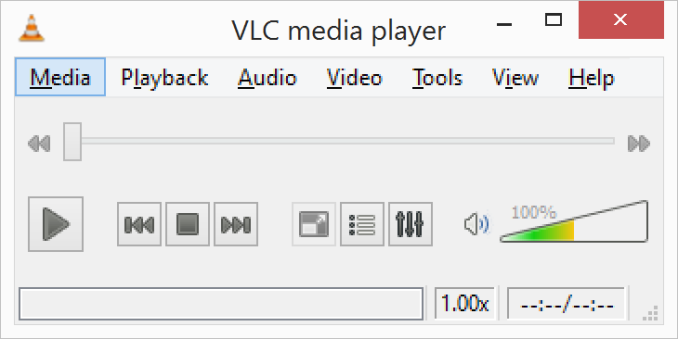


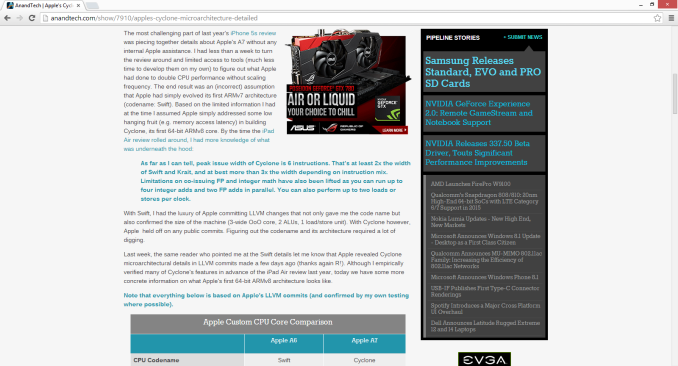

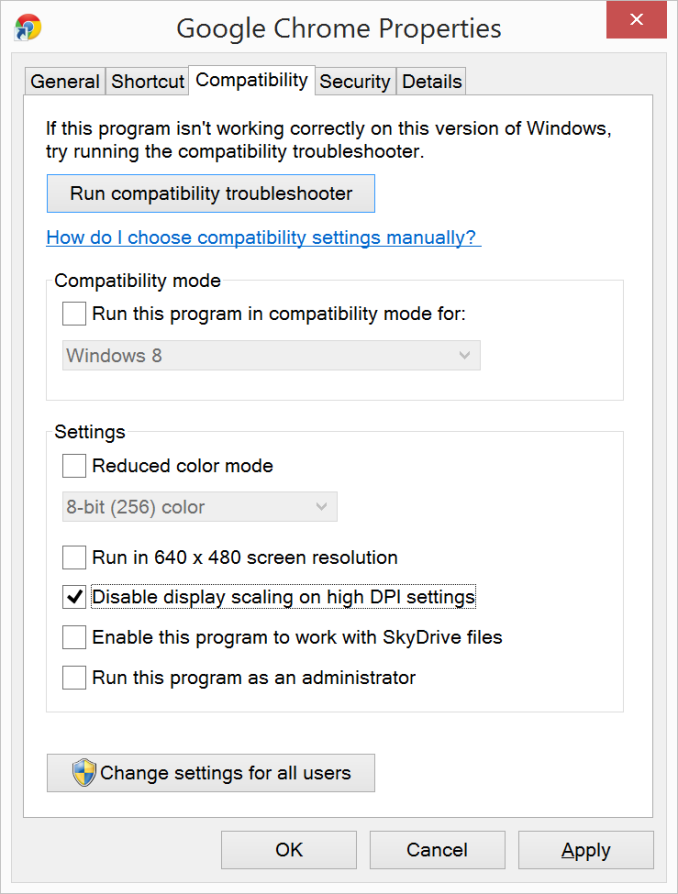
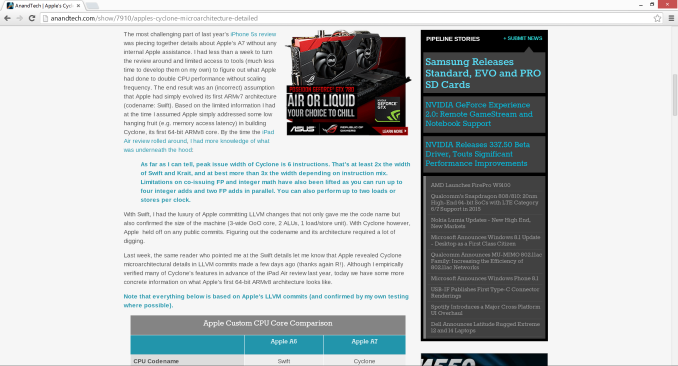

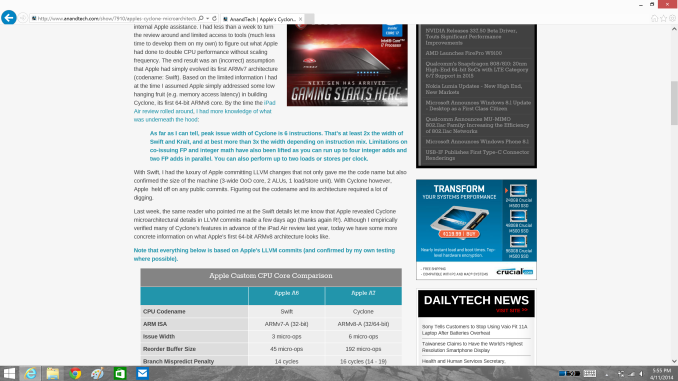









114 Comments
View All Comments
Hrel - Monday, April 21, 2014 - link
"but in almost all cases a better solution was to simply lower the resolution of the monitor, even if it introduced blurriness to the LCD image." - I worked at a local computer store back before Vista came out, and long after when we were still selling mostly XP and the client base was largely senior citizens. That quote was the bane of my existence. "Great, now they can see what they're looking at and my eyes are about to explode from the strain of looking at this shit image".Silma - Tuesday, April 22, 2014 - link
A few remarks:- IBM offered high dpi monitors years before Apple did.
- the dpi scaling isn't per monitor in Windows 8.1 for the user. Windows 8.1 somehow adapts the scaling you choose for monitor A to monitor B. As a user of a 15.6 3200*1800 laptop and an external 2560*1440 27' monitor I can guarantee you the results are absolutely subpar. I am praying for the day where Windows recognizes I know better than it does what dpi scaling I want and let me specify individually dpi scaling per monitor.
- As for Adobe it is a disgrace. If you want to feel how many CS customers are pissed do a search for dpi scaling in their support forum. The official answer is that it is all Microsoft's fault and they are working with them. However 1. They refuse to give any timeframe. 2. It may be that the API needs fine tuning but by and large the problem lies with bad old programming from Adobe. There are many many desktops applications that scale perfectly with Windows 8/8.1 including some Adobe applications. To me it is unacceptable that PhotoShop still hasn't been fixed despite the astronomical upgrades prices (and now the cloud subscriptions extortion). That's why I switched to gimp, which sucks as much scaling-wise, but at least it's free.
Netscorer - Friday, May 9, 2014 - link
My Windows 8.1 laptop alternates as desktop or HTPC, driving 3 very different monitors: the low res laptop built-in display, high-res Desktop monitor and 1080P huge 65'' TV screen. I am sick and tired tweaking resolution and scaling settings every time I connect to different monitor. I wish MS would allow to simply remember monitor profiles and automatically switch to the best settings. Maybe it's there somewhere but I have not found it yet.drgadgetz - Sunday, February 1, 2015 - link
Just had a new Toshiba P50T - hi-res 3200x2160 laptop. As an app developer, I find it disturbing that the UI scaling is not adapted by most of the developer tools like SOAPUI and Adobe CC Applications. I also find it annoying that large corporations like Adobe will release massive distributions of their software without testing their products with the mainstream technologies - in which UI scaling is a mandatory. Yes, they tried to solve the UI scaling of Photoshop, so why dont they do it for all their product offerings that I pay a subscription for in advance for a year. If they have resolved it then why not implement it on all their products.Another fault I find in the new hi-res laptops is the ability to be backward compatible. Could it be because the new Windows 8.1 is not completely tested as well.
I guess the only good news to these big UI Scaling fiasco, is that this companies like Adobe can use the help of some of us expert developers in fixing their UI problems. And maybe so that they can speed up their releases and bug fixes.
Common now, someone in Executive management listen to the people in these forums...Get this fix now or Donald Trump will tell you, ' You're FIRED!'.